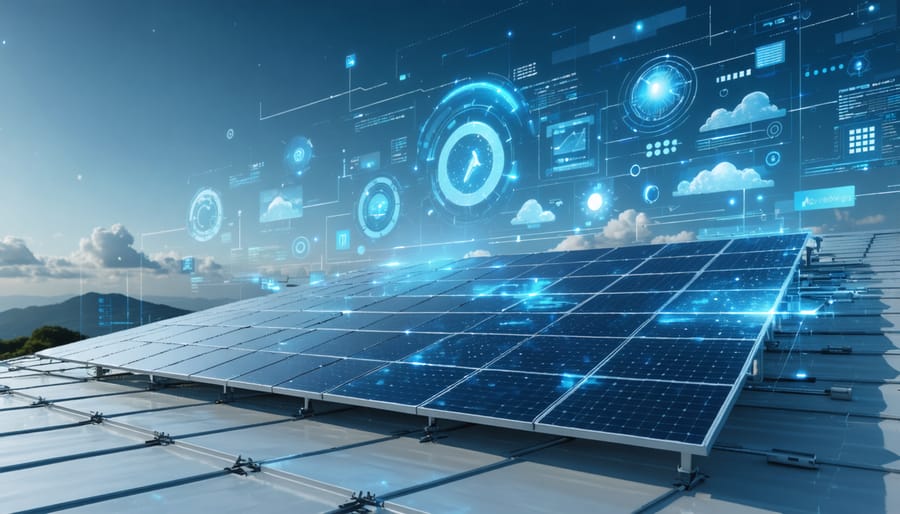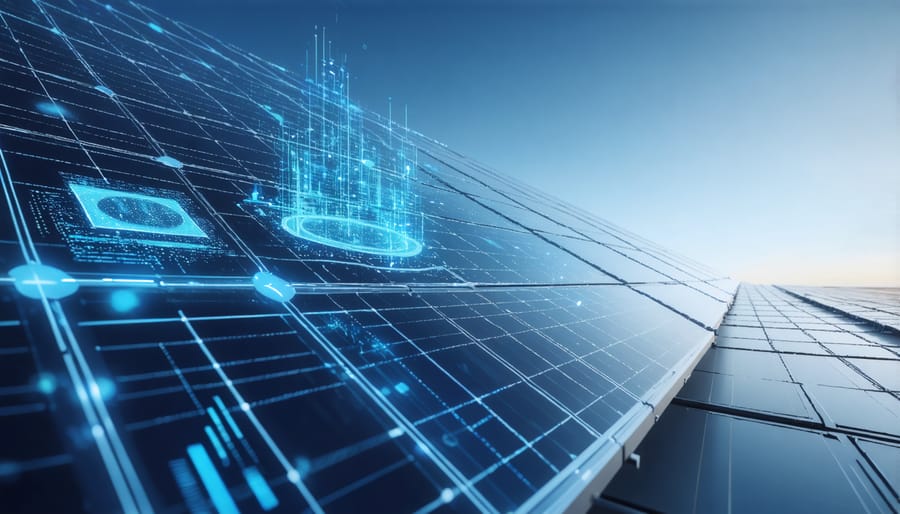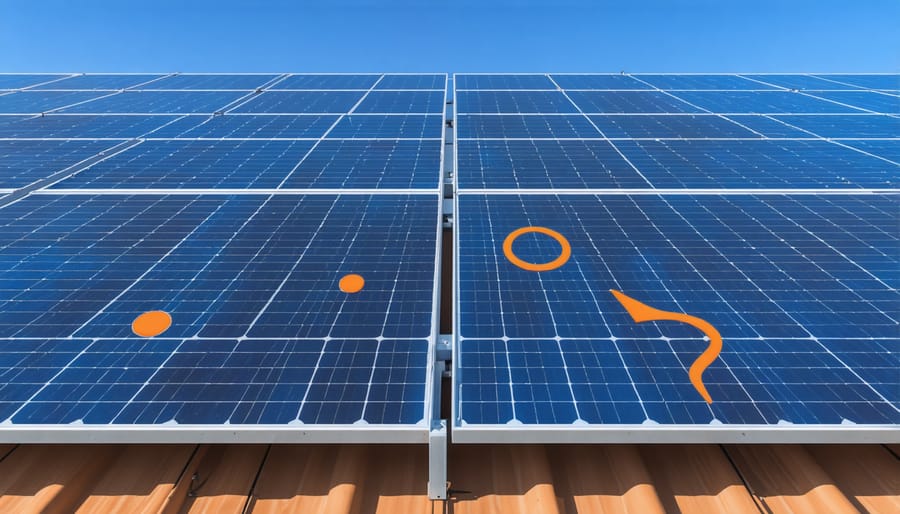AI-Powered Solar Optimizers Are Revolutionizing Home Energy Storage

In the race toward sustainable energy optimization, photovoltaic optimizers represent a transformative leap in solar power efficiency. These intelligent devices, working at the individual panel level, maximize energy harvest by up to 25% compared to traditional string inverter systems. By continuously adjusting voltage and current parameters, modern PV optimizers ensure each solar panel performs at its peak capacity, even under challenging conditions like partial shading or module mismatch.
As Europe accelerates its renewable energy transition, photovoltaic optimizers have emerged as a crucial technology for both residential and commercial installations. They not only boost energy production but also provide detailed panel-level monitoring, enabling precise system diagnostics and predictive maintenance. This smart technology addresses one of solar energy’s longstanding challenges: the underperformance of entire arrays due to individual panel inefficiencies.
For property owners and energy managers, implementing PV optimizers means enhanced system reliability, improved ROI, and sophisticated energy management capabilities. The technology’s ability to maintain optimal power output while providing real-time performance data has made it an essential component in modern solar installations, particularly in regions with variable weather conditions or complex roof architectures.
How AI-Enhanced Photovoltaic Optimizers Transform Solar Performance
Real-Time Panel Monitoring and Adjustment
Modern photovoltaic optimizers employ sophisticated real-time monitoring systems that continuously analyze the performance of each solar panel in your array. Through advanced sensors and AI-driven algorithms, these systems track crucial parameters including voltage, current, temperature, and power output at the individual panel level.
The optimizer’s intelligent monitoring system instantly detects any variations in panel performance, whether caused by partial shading, dust accumulation, or technical issues. When performance drops below optimal levels, the system automatically adjusts power parameters to maximize energy harvest from each panel independently.
This granular level of monitoring provides unprecedented control over your solar installation. The system generates detailed performance reports and alerts, enabling proactive maintenance and swift response to any issues. Property owners can access this information through user-friendly interfaces, often via smartphone apps or web portals, making it simple to track system efficiency and energy production in real-time.
The continuous optimization process ensures that temporary obstacles, like passing clouds or fallen leaves, have minimal impact on the overall system performance, maintaining consistent energy production throughout varying conditions.

Smart Energy Distribution
Modern photovoltaic optimizers leverage artificial intelligence to make split-second decisions about energy distribution, maximizing the efficiency of your solar installation. These smart systems continuously analyze power generation patterns, consumption habits, and grid conditions to determine the optimal routing of solar energy.
The intelligence behind these systems works in tandem with battery management systems to make strategic decisions about when to store excess energy and when to release it. During peak sunlight hours, the optimizer might direct surplus power to storage while ensuring immediate consumption needs are met. When grid electricity prices are high, the system can automatically switch to stored power, maximizing cost savings.
What sets these smart distribution systems apart is their ability to learn and adapt. They can anticipate weather patterns, predict household consumption peaks, and adjust accordingly. This predictive capability ensures optimal energy flow throughout your property, reducing waste and maximizing self-consumption rates. The system’s automated decision-making process takes into account factors like time-of-use tariffs, weather forecasts, and historical usage patterns to deliver the most cost-effective energy solution for your specific needs.
The Intelligence Behind Modern Solar Storage
Predictive Analytics for Energy Management
Modern photovoltaic optimizers leverage advanced predictive analytics to revolutionize energy management in solar installations. By implementing sophisticated algorithms, these systems can accurately forecast both energy production and consumption patterns, enabling smarter decision-making and improved system efficiency.
The core of this technology lies in how AI predicts and optimizes solar performance through real-time data analysis. The system continuously monitors various parameters, including weather forecasts, historical performance data, and consumption patterns, to create precise predictions for energy generation and usage.
These predictive capabilities enable proactive energy management by:
– Anticipating peak production periods and optimizing energy storage
– Forecasting maintenance needs before issues arise
– Adjusting system parameters based on expected weather conditions
– Balancing grid demand with solar production
For European installations, this technology is particularly valuable due to varying seasonal daylight hours and weather patterns. The optimizer can adapt its strategies according to regional conditions, ensuring optimal performance year-round. Property owners receive detailed insights through user-friendly interfaces, allowing them to make informed decisions about their energy consumption and storage.
The system’s ability to learn from historical data means its predictions become increasingly accurate over time, leading to enhanced system efficiency and reduced energy costs. This predictive functionality represents a significant advancement in photovoltaic technology, making solar energy systems more reliable and cost-effective for both residential and commercial applications.
Weather-Adaptive Optimization
Modern photovoltaic optimizers leverage artificial intelligence to dynamically adjust system parameters based on ever-changing weather conditions, maximizing energy yield throughout the year. These smart systems continuously analyze meteorological data, including cloud cover, temperature, and seasonal variations, to make real-time adjustments to power harvesting settings.
The optimization process involves sophisticated algorithms that learn from historical weather patterns and system performance data. When clouds pass overhead, the optimizer swiftly adjusts voltage and current levels to maintain optimal power output. During seasonal transitions, it automatically adapts to changing sun angles and daylight hours, ensuring consistent energy production regardless of environmental conditions.
For European installations, where weather patterns can be particularly variable, these weather-adaptive features prove especially valuable. The system’s ability to predict and respond to weather changes helps maintain stable energy output even during partially cloudy days or during the shorter winter months. This intelligent adaptation, while considering various AI energy management considerations, can increase annual energy yield by up to 15% compared to traditional systems.
The optimizer’s weather-adaptive capabilities also include protection mechanisms against adverse conditions such as snow coverage or extreme temperatures, automatically adjusting parameters to prevent system stress and maintain long-term reliability. This proactive approach to weather management ensures sustainable performance and extends the system’s operational lifespan.

Installation and Integration Considerations

Compatibility with European Solar Systems
Photovoltaic optimizers designed for European markets comply with stringent EU regulations and technical standards, ensuring seamless integration with existing solar infrastructure. These devices are specifically calibrated to work with European grid voltages (230V/400V) and frequency (50Hz), making them ideal for both residential and commercial installations across the continent.
Most modern optimizers are compatible with hybrid solar inverter systems from leading European manufacturers, supporting single-phase and three-phase configurations. They’re engineered to operate efficiently in various European climate conditions, from the Mediterranean sun to Nordic winters, with built-in protection against extreme weather events.
To ensure proper functionality, European installations require optimizers certified under IEC standards and VDE regulations. The devices must also comply with specific regional requirements, such as German grid codes (VDE-AR-N 4105) or Italian CEI standards. Manufacturers typically provide region-specific firmware updates and technical documentation in multiple European languages, facilitating smooth installation and maintenance processes.
Professional Installation Support
Professional installation of photovoltaic optimizers requires expertise and precise implementation to ensure optimal system performance. Most leading manufacturers offer comprehensive support networks across Europe, connecting property owners with certified installers who have undergone specialized training in optimizer technology deployment.
The installation process typically begins with a detailed site assessment, where professionals evaluate your existing solar setup or plan a new installation. They consider factors such as roof orientation, shading patterns, and electrical infrastructure to determine the most effective optimizer configuration.
Many manufacturers provide ongoing technical support through dedicated service centres, offering real-time assistance during installation and system commissioning. This includes access to specialized design software, mobile apps for configuration, and remote troubleshooting capabilities.
Installation partners often deliver complete project management services, handling everything from initial planning and permitting to final system verification. They ensure compliance with local regulations and help owners register their systems for relevant incentive programmes.
Post-installation support typically includes system monitoring setup, performance verification, and comprehensive documentation of the installation. Many installers also offer maintenance contracts and warranty support services to ensure long-term system reliability.
The integration of AI-enhanced photovoltaic optimizers represents a significant leap forward in solar energy technology, offering unprecedented levels of system performance and efficiency. These smart optimizers have demonstrated their ability to increase energy yield by up to 25% while substantially reducing maintenance costs through predictive diagnostics and automated adjustments.
For European homeowners and businesses, the implementation of AI-enhanced optimizers provides a compelling solution to common challenges such as partial shading, panel mismatch, and varying weather conditions. The technology’s ability to adapt in real-time ensures optimal energy harvesting throughout the day, contributing to faster return on investment and reduced carbon footprint.
Looking ahead, the future of AI-enhanced photovoltaic optimizers appears particularly promising. Ongoing developments in machine learning algorithms and IoT integration are expected to further improve system intelligence and automation capabilities. These advancements will likely lead to even more sophisticated optimization strategies, better energy forecasting, and enhanced grid integration possibilities.
As Europe continues its transition towards renewable energy, AI-enhanced optimizers will play a crucial role in maximizing the potential of solar installations. Their ability to provide detailed performance analytics, coupled with autonomous optimization, positions them as an essential component of modern solar energy systems. This technology not only supports current sustainability goals but also paves the way for more efficient and intelligent energy management solutions in the future.
Leave a Reply